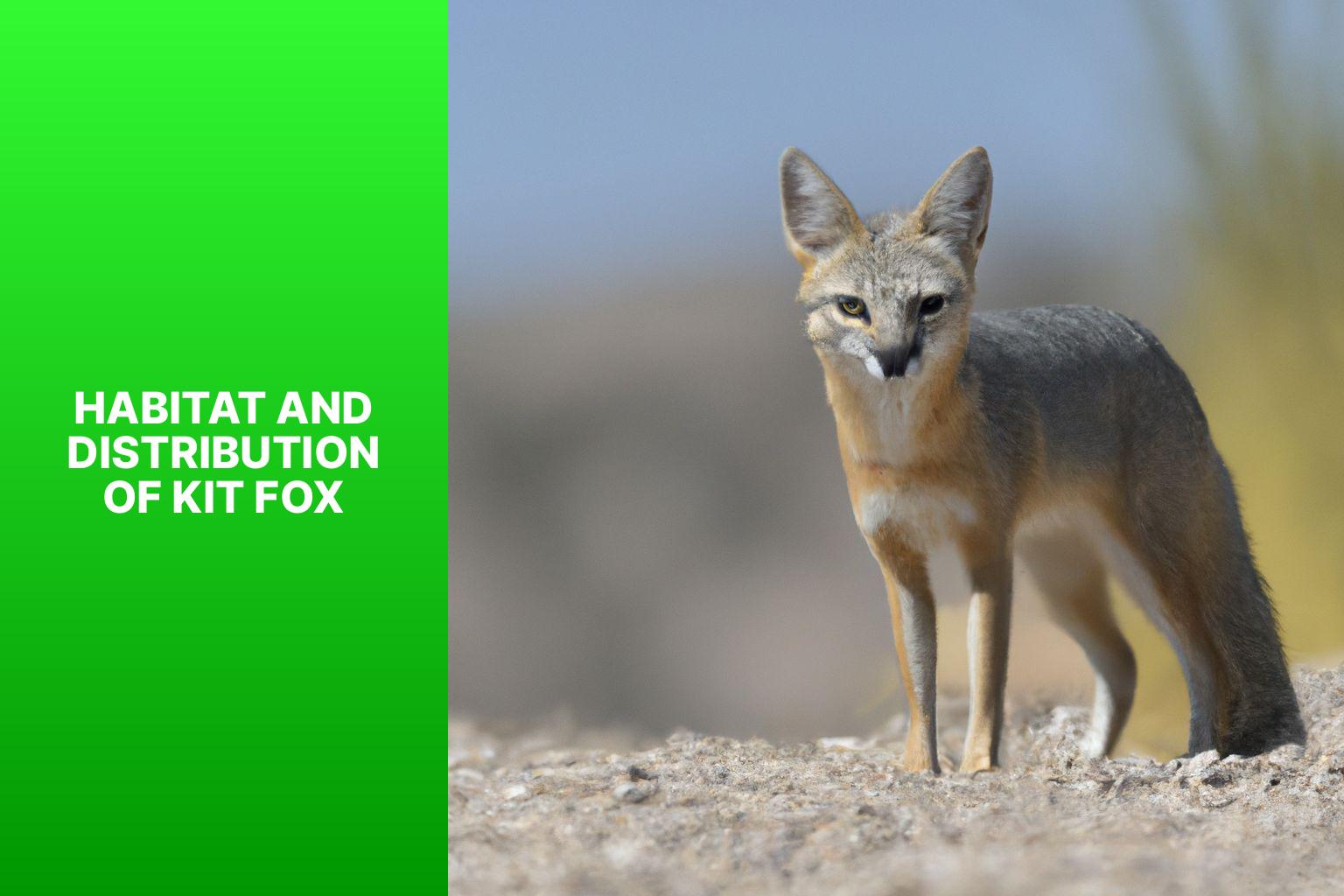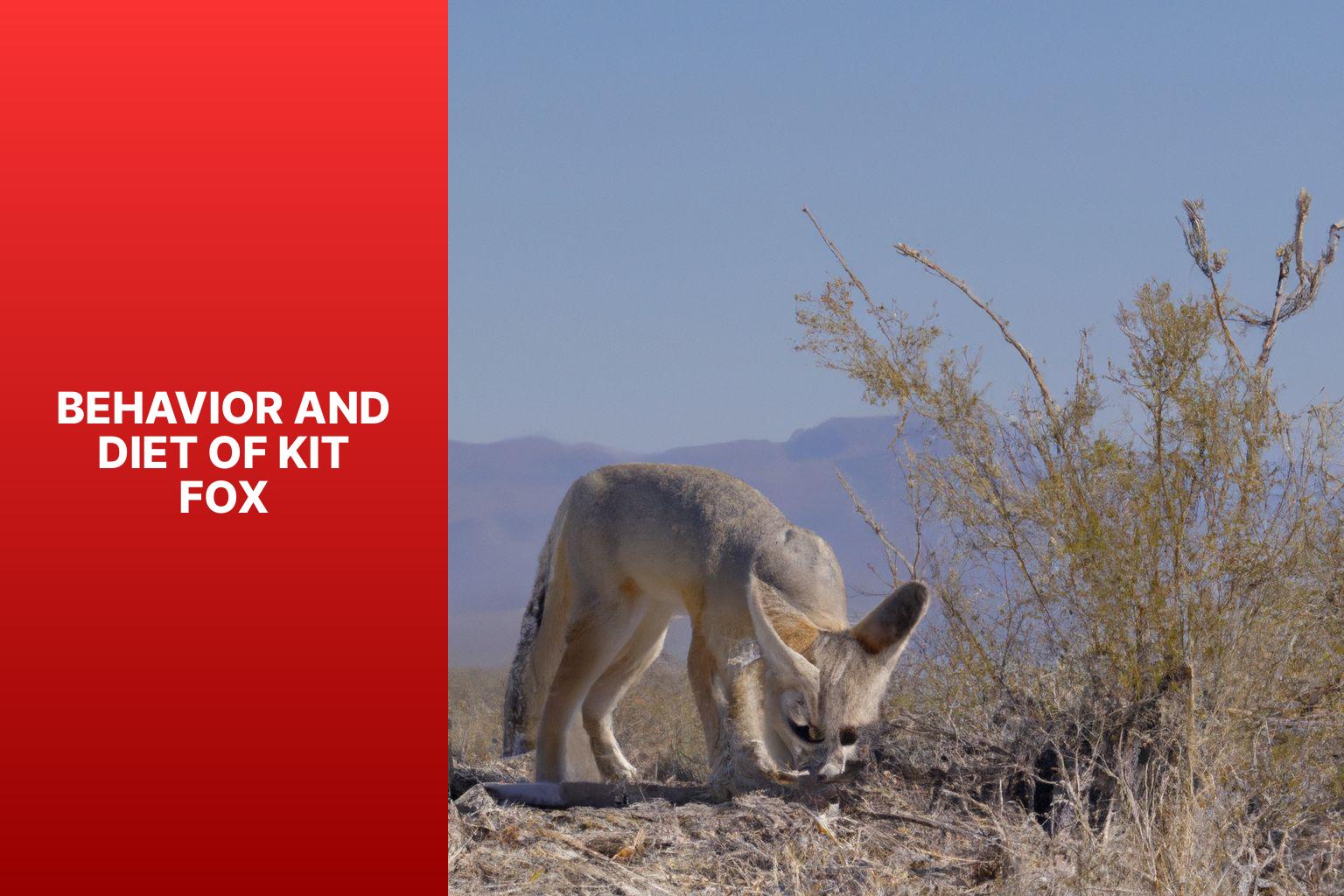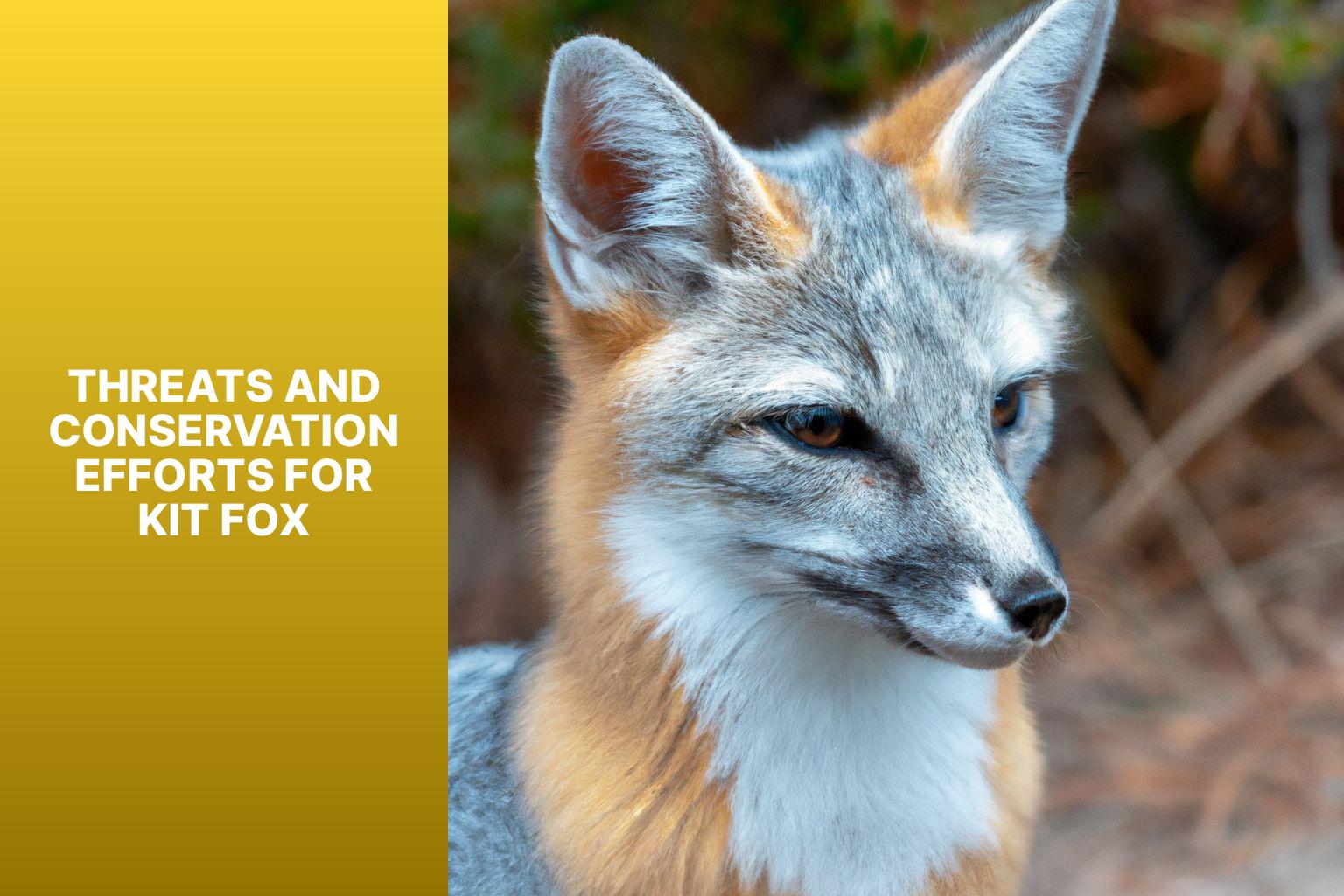The Kit Fox species, scientifically known as Vulpes macrotis, is a fascinating creature found in the southwestern regions of North America. With its unique physical characteristics, behavior, and distribution, the Kit Fox has caught the attention of researchers and wildlife enthusiasts alike. In this article, we will explore the key aspects of this species, including its physical traits, habitat, behavior, and diet. We will also delve into its conservation status and the various threats it faces in the wild, as well as the conservation efforts being made to protect it. We will uncover some interesting facts about the Kit Fox that highlight its remarkable nature. Join us on this journey to discover the intriguing world of the Kit Fox species.
Contents
- 1 Key takeaway:
- 2 Physical Characteristics of Kit Fox
- 3 Habitat and Distribution of Kit Fox
- 4 Behavior and Diet of Kit Fox
- 5 Conservation Status of Kit Fox
- 6 Threats and Conservation Efforts for Kit Fox
- 7 Interesting Facts about Kit Fox
- 8 Frequently Asked Questions
- 8.1 What is the scientific name of the Kit Fox species?
- 8.2 What is the size and weight of a fully grown Kit Fox?
- 8.3 What is the state conservation status of the Kit Fox?
- 8.4 What are the natural habitats of the Kit Fox?
- 8.5 What are the threats to the Kit Fox population?
- 8.6 What is the lifespan of a Kit Fox?
Key takeaway:
- Kit Fox species conserve water: Kit Fox species have adapted to arid habitats and have the ability to survive with limited water resources.
- Kit Fox species face threats from habitat loss: The Kit Fox species experience habitat loss due to urbanization and human activities, which puts their survival at risk.
- Kit Fox species exhibit unique behaviors: The Kit Fox species display nocturnal behavior, live in social structures, and have specific dietary preferences.
Physical Characteristics of Kit Fox
The kit fox, known for its physical characteristics, possesses a small and slender body, measuring around 18 to 22 inches in length. This agile creature is recognized for its large ears, which can reach up to 5 inches in length, and a bushy tail. The fur of the kit fox is primarily gray or tan, allowing it to blend seamlessly with the surrounding desert environment.
Thanks to its exceptional eyesight, the kit fox can easily spot prey and evade potential threats from predators. Equipped with sharp teeth and powerful jaws, this fox is adept at capturing and tearing apart its prey. Surprisingly, in arid environments, the kit fox manages to obtain water from its food, which eliminates the need for external sources.
With its strong legs and agile body, this fox can navigate through desert vegetation and sand dunes effortlessly. When it comes to finding shelter and protection from extreme temperatures, the kit fox showcases its digging skills by creating burrows. The kit fox’s large ears play a vital role in detecting sounds and movements in its surroundings.
As a solitary and highly territorial creature, the kit fox marks its territory with urine and feces. All of these physical adaptations allow the kit fox to thrive and fulfill its ecological role within the challenging desert environment.
Habitat and Distribution of Kit Fox

Photo Credits: Foxauthority.Com by Ryan King
The Habitat and Distribution of Kit Fox is mainly in arid regions in North America, specifically the southwestern United States and parts of Mexico. These foxes are well adapted to living in desert environments, including sandy or rocky terrain, which serves as their natural Habitat. They can survive in extreme conditions and can be found in various ecosystems such as scrublands, grasslands, and agricultural areas, indicating their wide Distribution. Their preference for open habitats with low vegetation allows them to efficiently hunt small mammals, birds, and insects.
One notable fact is that Kit Foxes are highly adaptable and can thrive in both rural and urban areas, demonstrating their ability to adapt to different habitats and distributions. Human activities have significantly impacted their populations, leading to habitat fragmentation and degradation. To ensure the survival and recovery of Kit Fox populations, conservation efforts such as establishing protected areas and promoting sustainable land management practices are crucial.
An example of a study conducted to understand the Habitat and Distribution of Kit Foxes is in Arizona. Wildlife biologists utilized motion-activated cameras to capture images of these elusive creatures in various locations. After months of data collection, they discovered that Kit Foxes had adapted to urban environments, with several individuals spotted in city parks and residential neighborhoods. This discovery further emphasized their ability to coexist with human activities. Consequently, the local community became more aware of the importance of preserving suitable habitats for these unique desert dwellers and implemented conservation measures to protect their populations in both rural and urban settings.
Behavior and Diet of Kit Fox

Photo Credits: Foxauthority.Com by Bradley Martin
The behavior and diet of the fascinating Kit Fox species will be our focus. Get ready to dive into the captivating world of these creatures as we explore their nocturnal behavior, social structure, and dietary preferences. From their mysterious nighttime habits to their unique ways of socializing and eating, you won’t want to miss out on discovering the intriguing facts and observations about the Kit Fox.
Nocturnal Behavior
Kit Foxes are known for their nocturnal behavior, as they are primarily active at night. This adaptation allows them to avoid potential predators and find food more easily. Their excellent night vision is a key factor in their hunting success, as they rely on it to navigate and capture prey with precision. Kit Foxes feed on a variety of small mammals, insects, birds, and reptiles. Their hunting skills are truly impressive, as they showcase their expertise through pouncing and chasing their targets.
To enhance their hunting abilities, Kit Foxes have developed strategies to adapt to the darkness. Their large ears help them detect even the slightest sounds of prey, giving them an advantage in their nighttime hunts.
During the day, Kit Foxes retreat to dens that offer shelter from extreme temperatures and potential threats. Factors such as food availability, climate, and predator activity influence their nocturnal behavior. By understanding the nocturnal behavior of Kit Foxes, we can appreciate their unique adaptations and their importance in the ecosystem. They demonstrate remarkable skills as efficient predators and survivors in their habitats.
Social Structure
The social structure of kit foxes is a vital aspect that influences their survival and reproductive success. It encompasses various elements such as hierarchical organization, cooperative breeding, territoriality, communication, group cohesion, and a monogamous mating system. Kit foxes form small family groups consisting of a dominant male and female, together with their offspring. These dominant individuals control resources and reproductive opportunities within the group. Subordinate adult kit foxes play a crucial role in raising the dominant pair’s offspring, thereby ensuring the survival and success of the entire family group.
Territoriality is another important characteristic of kit foxes. They vigorously defend their specific territories from intruders using vocalizations and scent marking. Kit foxes utilize vocalizations, facial expressions, and body postures to effectively communicate among themselves. These forms of communication help establish dominance, express submission, and coordinate group activities. Kit foxes develop strong bonds among family members by engaging in hunting, grooming, and playing together. These activities strengthen the social bonds and overall group cohesion.
One of the core aspects of the social structure of kit foxes is the long-term pair bond formed by the dominant male and female. This bond promotes stability and enhances the prospects of successful reproduction. Understanding the dynamics of the social structure in kit foxes is essential for conservation efforts aimed at protecting and preserving their populations. Conservation strategies should prioritize maintaining the integrity of family groups and their social interactions, as these play a significant role in ensuring the long-term survival of the species.
Dietary Preferences
The dietary preferences of the kit fox are diverse and can vary based on availability and season. As their primary food source, they rely on small mammals such as rodents, rabbits, and ground squirrels. Insects, including beetles, grasshoppers, and caterpillars, also play a significant role in their diet. Kit foxes occasionally prey on small birds and reptiles. In times of scarcity, they may resort to consuming fruits and vegetation for sustenance.
It is crucial to note that the dietary preferences of kit foxes can change depending on the availability of food in their habitat. They are highly adaptable and can adjust their diet accordingly. To study or observe kit foxes, it would be beneficial to research their specific habitat and the food sources that are accessible to them. This research can provide valuable insights into their dietary preferences. Documenting any changes in their diet over time could help in understanding their adaptability in different situations.
Conservation Status of Kit Fox
The conservation status of the kit fox is crucial for its survival. The kit fox (Vulpes macrotis) holds a classification of “least concern” on the International Union for Conservation of Nature (IUCN) Red List, indicating that the population of kit foxes remains stable and devoid of any immediate risk of extinction.
Numerous factors contribute to the healthy conservation status of kit foxes. Kit foxes demonstrate the ability to thrive in various habitats, including deserts, grasslands, and shrublands. They have adeptly adapted to urban areas.
Conservation efforts have played a pivotal role in maintaining the population of kit foxes. Responsible land management practices, such as protecting their habitats and implementing predator control programs, have diligently ensured their survival.
Localized threats can potentially impact the local kit fox populations. Urbanization and agricultural activities are significant causes of habitat loss in specific regions. Invasive species and diseases can also pose challenges.
To enhance the conservation status of the kit fox, ongoing monitoring and research are essential. By comprehending their population dynamics, distribution, and potential threats, conservationists can effectively implement targeted measures to protect this species and promote its long-term survival.
In the early 20th century, the kit fox population experienced a decline primarily due to habitat destruction and predator persecution. Dedicated conservation efforts, including the establishment of protected areas and the reintroduction of captive-bred individuals, successfully reversed this negative trend. Consequently, the kit fox has become a symbol of successful conservation and serves as a reminder of the significance of preserving natural ecosystems for future generations. The commitment to kit fox conservation ensures its thriving in the future.
Threats and Conservation Efforts for Kit Fox

Photo Credits: Foxauthority.Com by Austin Baker
As the remarkable Kit Fox faces various challenges to its survival, it is crucial to understand the threats it confronts and the efforts in place to conserve this species. From habitat loss to predation and competition, this section takes a closer look at the perils faced by Kit Foxes. We will also explore the ongoing conservation endeavors aimed at protecting their delicate ecosystems. Join us to uncover the intricate balance between the survival of these foxes and the ever-changing landscapes they call home.
Habitat Loss
Habitat loss is a significant threat to the survival of Kit Foxes. With the rapid pace of urbanization, as well as agricultural and infrastructure development, their habitats have been destroyed and fragmented, directly impacting their population.
Urbanization stands out as a major cause of habitat loss for Kit Foxes. As cities grow and expand, the conversion of their natural habitats into residential and commercial areas leaves limited space for these foxes to flourish. The construction of roads further fragments their habitats, posing challenges for their movement and resource acquisition.
To read more about the fascinating evolution of Kit Foxes: Adapting to Survival and Thriving in Nature, click here.
The expansion of agriculture also contributes significantly to habitat loss. The conversion of natural landscapes into farmland reduces the availability of suitable habitats for Kit Foxes. Intensive farming practices destroy vegetation and utilize pesticides, which can harm both the foxes and their prey.
It is essential to note that habitat loss not only affects Understanding the Habitat and Behavior of the Kit Fox in Zoology but also disrupts the delicate balance of the ecosystem. Understanding the Habitat and Behavior of the Kit Fox in Zoology play a crucial role in controlling rodent populations, and their absence can lead to an increase in agricultural pests and the spread of diseases.
To mitigate the impact of habitat loss, conservation efforts are of utmost importance. Establishing protected areas, creating wildlife corridors, and promoting sustainable land management practices can all contribute to the preservation of their habitats and ensure the long-term survival of Kit Foxes.
<table> tags remain intact.
Agricultural Expansion
Agricultural expansion threatens the habitat and survival of kit foxes. It destroys and fragments their natural habitats, limiting their access to food, water, and shelter. This negatively affects the size and distribution of kit fox populations.
Impact of Agricultural Expansion on Kit Foxes:
- – Agricultural activities, such as crop cultivation and grazing land establishment, lead to vegetation loss and landscape alteration.
- – Converting natural habitats into agricultural fields reduces suitable habitat for kit foxes, causing them to relocate to smaller, fragmented areas or seek refuge in urban environments.
- – Agricultural expansion also increases the risk of direct mortality for kit foxes, as they may be targeted as pests or accidentally killed by farming equipment or pesticides.
Conservation Efforts to Address:
- – Conservation organizations advocate for land-use policies that prioritize preserving natural habitats and implementing sustainable agricultural practices to protect and restore kit fox habitats.
- – Collaboration between conservationists, landowners, and farmers can establish conservation easements or agreements that promote coexistence between agriculture and kit fox habitats.
- – Raising awareness about the importance of conserving kit fox habitats and the negative impacts of agricultural expansion can drive changes in land-use practices.
The expansion of agriculture presents a serious challenge to kit fox survival and ecosystem health. Through dedicated conservation efforts and sustainable agricultural practices, we can mitigate the negative impacts and ensure the long-term viability of kit fox populations.
Predation and Competition
Predation and Competition significantly impact the survival and population dynamics of Kit Foxes. Here are key points to consider:
1. Predation: – Kit Foxes face major threats from predators such as coyotes, bobcats, and golden eagles. – These predators often target Kit Foxes for food, especially when other prey populations are scarce. – Kit Foxes have developed adaptations to evade predation, including small size, agility, climbing ability, and keen senses.
2. Competition: – Kit Foxes compete for resources, particularly food and shelter, with other predators and scavengers in their habitat. – They compete with larger predators like coyotes and foxes for prey, which affects their ability to find sufficient food. – Competition for den sites and suitable habitat can displace Kit Foxes.
Despite challenges, Kit Foxes persist in their habitats through survival strategies and adaptations. To ensure their conservation, efforts should focus on reducing predation and competition pressures. This can be achieved by conserving habitat, minimizing conflicts with other predators, and conducting research on ecological dynamics affecting Kit Fox populations.
Promoting habitat preservation, reducing human-induced threats, and implementing predator management programs will support the long-term survival of Kit Foxes and maintain balanced predator-prey relationships in their ecosystems.
Interesting Facts about Kit Fox
Kit foxes are fascinating creatures with unique and captivating facts. Here are some interesting facts about kit foxes:
-
Range: Kit foxes are found in southwestern regions of the United States and northern regions of Mexico.
-
Size: They are one of the smallest fox species, with an average body length of 18 to 22 inches and a weight of around 3 to 6 pounds.
-
Nocturnal creatures: Kit foxes are primarily nocturnal, preferring to be active at night to avoid the intense desert heat.
-
Excellent diggers: These foxes have strong front limbs and well-developed claws, allowing them to dig intricate underground burrows for shelter and protection.
-
Diet: They have a diverse diet that includes rodents, insects, reptiles, and some fruits and vegetation.
-
Mates for life: Kit foxes are monogamous and form long-term pair bonds. They mate for life and share the responsibilities of raising their young.
-
Adaptations: To survive in arid desert environments, kit foxes have developed adaptations such as large ears to dissipate heat and keen eyesight for hunting at night.
In a remarkable true story, researchers discovered a kit fox den hidden in a remote desert location. Through careful observation and tracking, they witnessed the incredible parenting skills of the kit foxes. The male and female fox worked together to care for their litter of pups, taking turns hunting and bringing back food to the den. This display highlighted the strong family bonds and resourcefulness of the foxes in adapting to their harsh desert habitat.
Frequently Asked Questions
What is the scientific name of the Kit Fox species?
The scientific name of the Kit Fox species is Vulpes macrotis.
What is the size and weight of a fully grown Kit Fox?
A fully grown Kit Fox measures approximately 12-20 inches in size and weighs around 4-5 pounds.
What is the state conservation status of the Kit Fox?
The Kit Fox is classified as a state-protected species.
What are the natural habitats of the Kit Fox?
Kit Foxes can be found in the southwestern United States and into central Mexico. In Nevada, they inhabit the Mojave Desert, as well as cold desert shrubland, sagebrush, and grasslands.
What are the threats to the Kit Fox population?
The Kit Fox faces threats such as habitat degradation, habitat loss, and predation.
What is the lifespan of a Kit Fox?
The average lifespan of a Kit Fox is 5-7 years.


